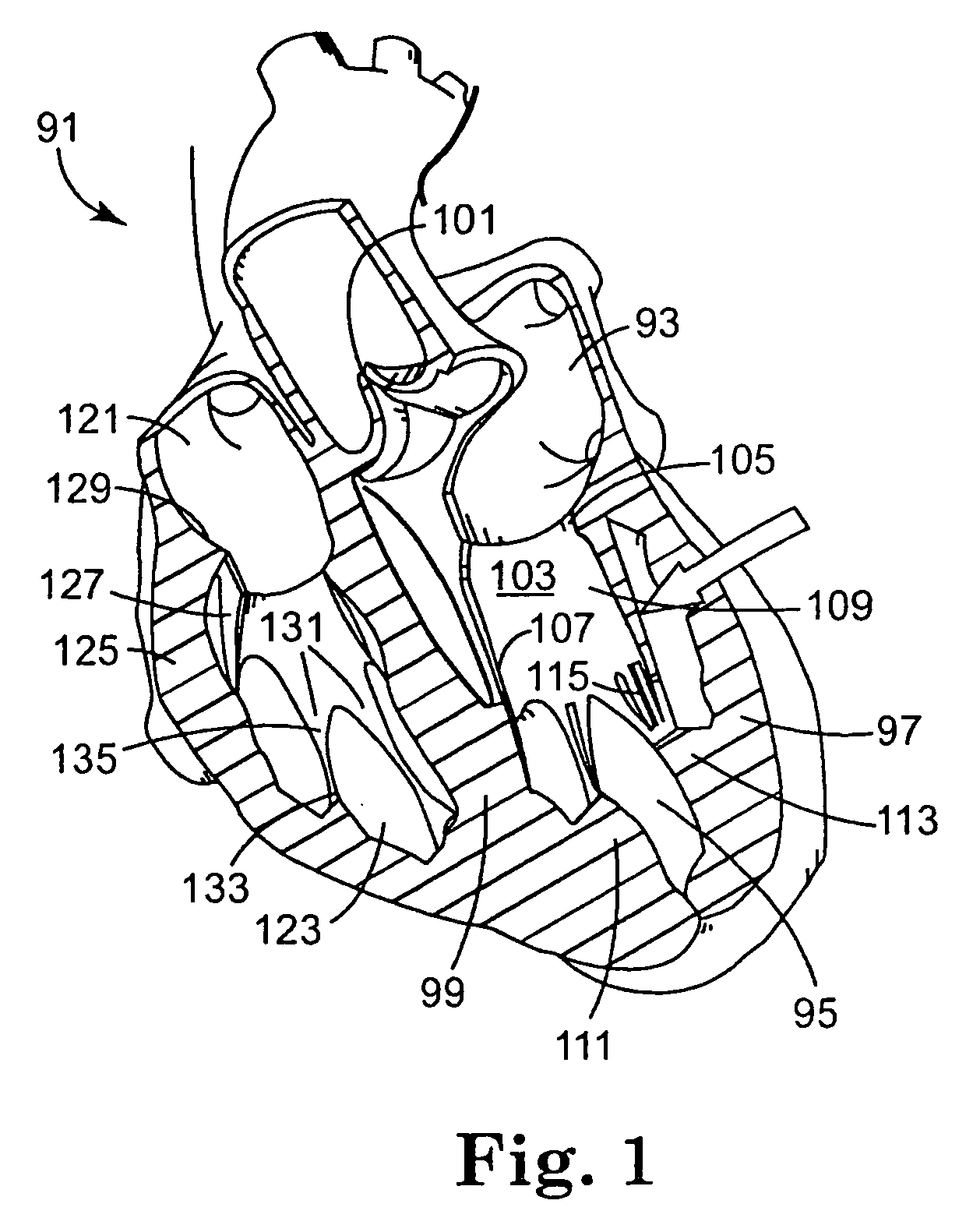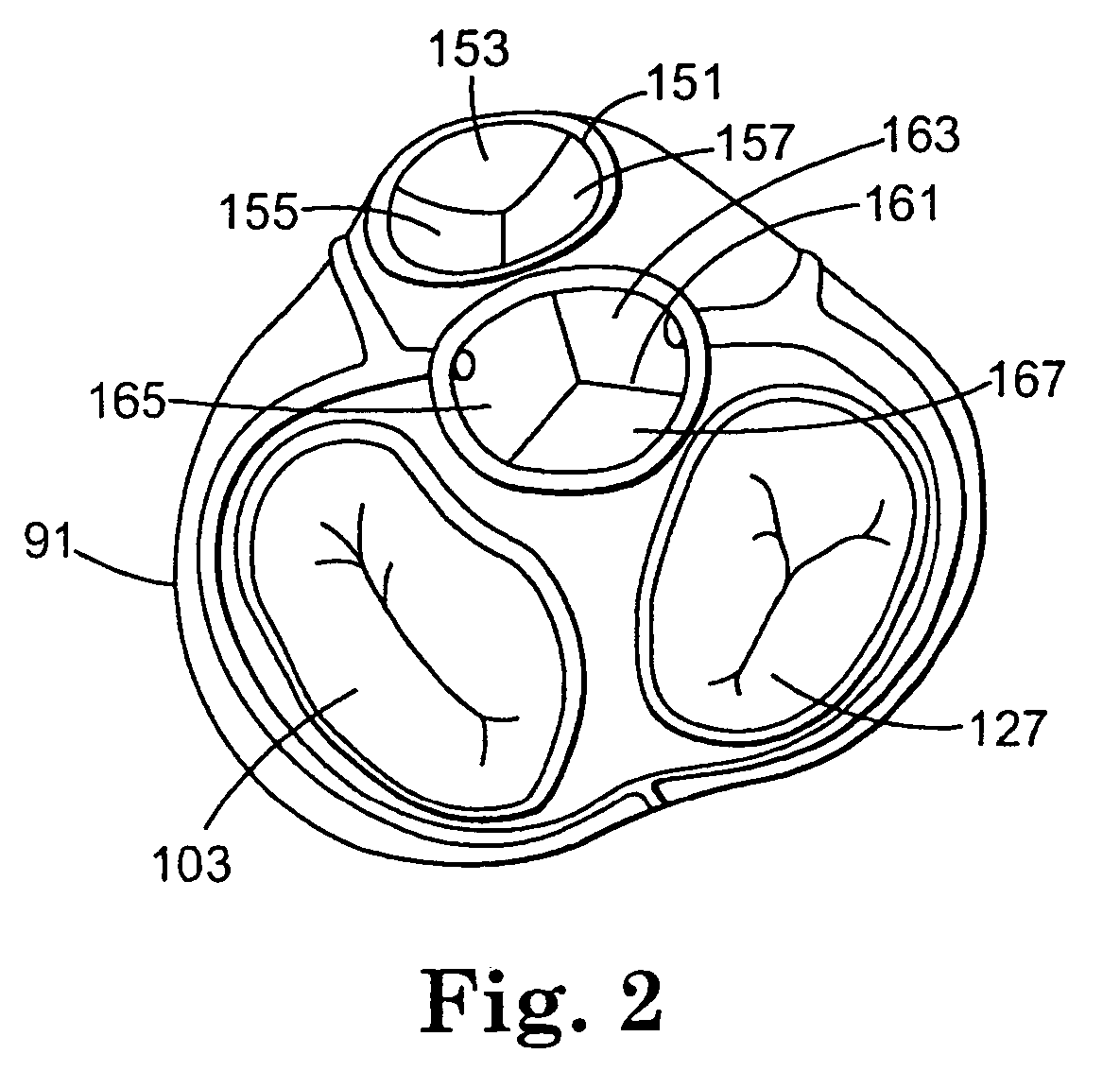Valve treatment catheter and methods
a valve and treatment catheter technology, applied in balloon catheters, medical science, surgery, etc., can solve the problems of stenotic valves not being able to fully open, requiring more work, and heart valve disease is a serious health problem, and achieve the effect of effective treatment of biological passages containing valves
- Summary
- Abstract
- Description
- Claims
- Application Information
AI Technical Summary
Benefits of technology
Problems solved by technology
Method used
Image
Examples
Embodiment Construction
[0039]The embodiments of the present invention described below are not intended to be exhaustive or to limit the invention to the precise forms disclosed in the following detailed description. Rather, the embodiments are chosen and described so that others skilled in the art can appreciate and understand the principles and practices of the present invention.
[0040]The present invention is directed to methods and apparatuses for effectively treating a biological passage, and in particular for delivering therapeutic agents to a valve within a biological passage. Such methods and apparatuses in accordance with the present invention can advantageously be used to provide flexibility in treatment duration and type of therapeutic agent delivered to the valve. In particular, the present invention has been developed for delivering one or more therapeutic agents to a valve while maintaining blood flow through the biological passage in a physiologic manner. Such devices (for example, catheters)...
PUM
 Login to View More
Login to View More Abstract
Description
Claims
Application Information
 Login to View More
Login to View More - R&D
- Intellectual Property
- Life Sciences
- Materials
- Tech Scout
- Unparalleled Data Quality
- Higher Quality Content
- 60% Fewer Hallucinations
Browse by: Latest US Patents, China's latest patents, Technical Efficacy Thesaurus, Application Domain, Technology Topic, Popular Technical Reports.
© 2025 PatSnap. All rights reserved.Legal|Privacy policy|Modern Slavery Act Transparency Statement|Sitemap|About US| Contact US: help@patsnap.com



